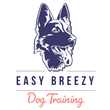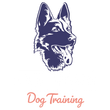Mastering the Art of Canine Strolls: A Guide to Leash Training Your Pooch
Embarking on the adventure of leash training your dog can feel like tackling a mystery novel – full of twists, turns, and pulling……oh the pulling! But don’t worry my fellow dog owners! With a sprinkle of CPR, consistency, patience, repetition, and a dash of tasty treats, you'll transform your four-legged friend into a sidewalk superstar in no time.
First thing - leash manners is a SKILL we need to teach our pooches. We can’t expect our dog, young or older, to know how to behave and what to do when we walk them if we haven’t taken the time to show them and teach them what to do instead!
When I adopted Finlay, he was two years old and his leash skills were…..well…..non-existent! He pulled, he was “reactive” to some dogs, he didn’t listen, and he was exactly like the title of my adult coloring book. I was very consistent for the first six months I had him, but then later in 2021 I was so busy with my business and training that I slacked off and he regressed A LOT! What did I do? I went back to CPR and now he is amazing on a leash (for the most part!).
I always ask my clients “How do YOU want to walk your dog?”
- Next to you, in a heel.
- In front, but no pulling.
- Combination of both
Personally, when I walk Finlay, the walk is for him. I use a 15 foot leash and it’s a Sniffari Walk! Imagine those 200-300 million scent receptors that dogs have and all of those lovely smells and all the pee-mail sprinkled around. Letting them smell will tire them out way more than a power walk!

Step 1: The walk starts IN the house
If your dog gets SO excited when you pull out their harness or leash that they can’t even focus on you or do simple commands like a Touch or Look, they are definitely not going to do that when you are outside in High Distraction.
- Put the harness on 15-30 min BEFORE you plan to go out.
- Tire out your dog BEFORE you go out with a fun game of fetch or flirt pole. Very important - if you do anything physical where it increases the adrenaline, make sure you do a scent game to help calm them down.
- Practice leash etiquette inside your house (low distraction) and the backyard (medium distraction).
- Practice Touch & Look a LOT! These two commands help get the focus on you.
Step 2: Words & Actions
Communicating more with your dog will help them understand what it is you want while out in high distraction. Some of the words I use with Finlay are;
- Touch - their nose touching my hand.
- Look - eye contact.
- Go Sniff! - giving your dog permission to go and sniff is a reward!
- Keep Going - letting your dog know that it’s not time to chase the rabbit or squirrel or go see a person or dog.
- This way! - use this when you change directions.
- 3, 2, 1 Let’s Go! - when it’s been 3 ½ minutes of sniffing and I want to keep walking, instead of yanking your dog, let them know that their time is up!
- Whoa - when your dog starts to pull a little too much
- Good Check in! - this is when your dog looks back at you without being prompted.
It doesn’t matter what word you use, as long as you use the SAME word with the SAME action every single time, your pooch will start to know what those words mean.
Step 3: Put it on YOUR terms
If your dog pulls you to get to another dog, person, lamp post or mailbox and they got there by pulling you, they have just rewarded themselves by that action. Pulling works for them! When they start to pull you towards something, ask for a Touch or Look and when they do, say “Yess! Go sniff!” and bring them to whatever it is they want. But, there may be times when they don’t give you what you have asked. This is where you need to bring out the superpower of Patience.
One night, around 11pmin, the first year I got Finlay, we went out for our last walk and he reacted to a dog across the street. I gave him some distance and asked for a Touch. Can you guess how long I waited for that Touch? 22 minutes!! Yup. Patience Daniel Son.
Distance is your friend when it comes to distractions or triggers. If they are pulling and not giving you a Look or Touch or they are barking like crazy, turn around and go in another direction and say “This way!”. Once your dog has calmed down a little bit, you can then ask them again for a Look and/or Touch.
You can also stop and wait for them to make a good choice and/or you can ask for something. But my favourite is going in another direction. Your walks may not be linear but zig-zag, but your dog, with lots of repetition, will start to learn that pulling will NOT get them to where they want to go.
Step 4: High-Value Rewards
When we are training in high distraction environments, we need to up our value of treats. Bring something extra special on your walks and reward good behaviour. Go Sniff is a big reward for Finlay, however, I do bring a few pieces of treats to make sure I can mark his good choices. This is now after 3yrs of LOTS of consistency and repetition.
Step 5: Keep It Lively and Light
Remember, your dog is learning. It is up to you to teach your dog how to behave on a walk. Adopt a cheerful tone, shower praise liberally, and don't shy away from taking breaks if either of you feels the need. With lots of CPR, your dog will soon strut down the sidewalk like a seasoned pro.
*This video shows the type of equipment I prefer.
#LeashTraining #DogWalkingTips #CanineEtiquette #DogTrainingJourney #PetBehavior #PawsOnPavement #MasteringLeashSkills #HappyPawsHappyWalks #DogTrainingGuide #SniffariWalks #DogOwnerTips #CPRforDogs #ConsistentTraining #PositiveReinforcement #PoochAdventures #FurryCompanion #DogBehaviorTips #PawsomeWalks #PatiencePaysOff #HighValueRewards #CheerfulWalks




Leave a comment